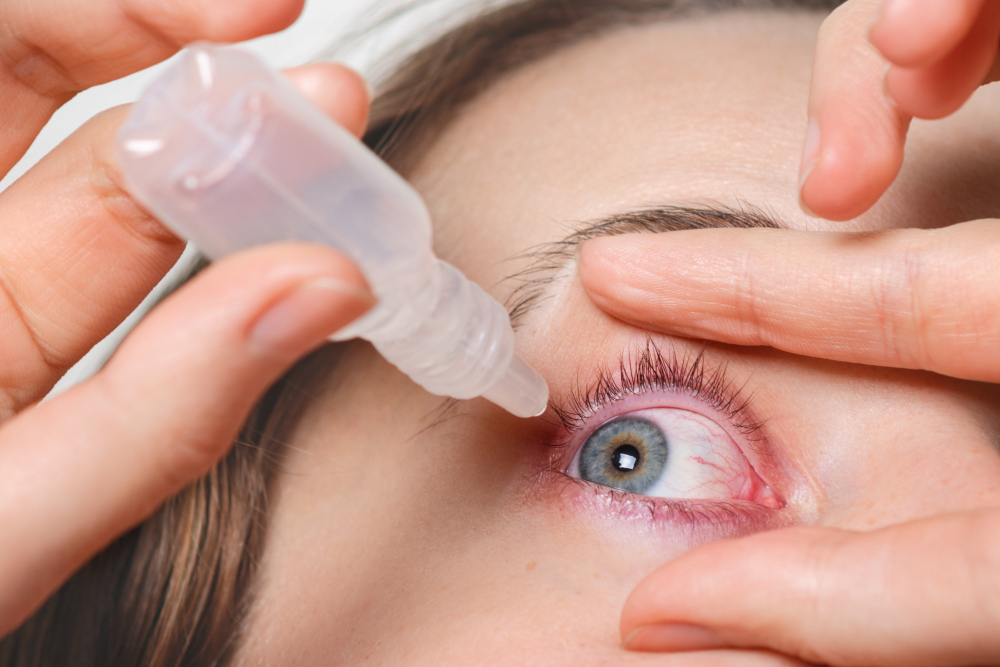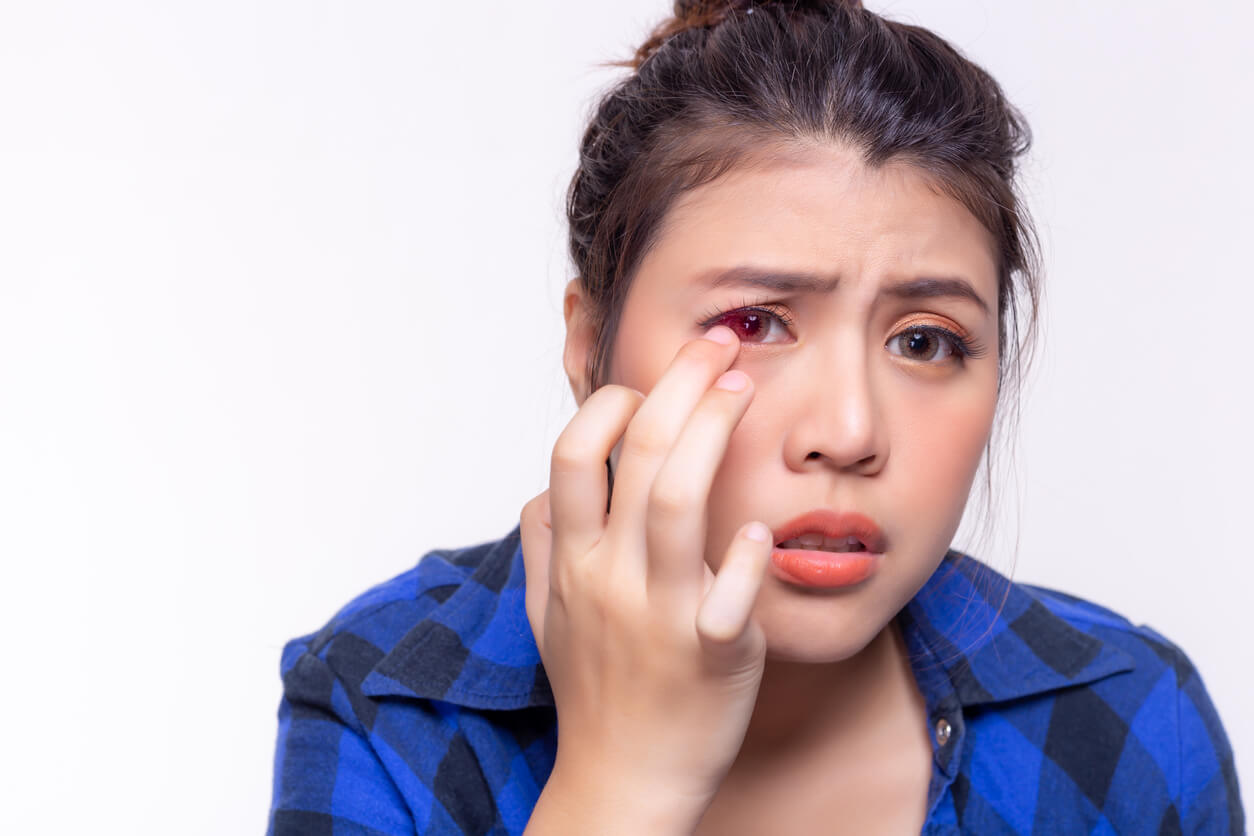Dry eye syndrome How To Stop And What Causes It


dry eye syndrom dry eye syndrome
A very common eye problem that results from constant wearing of contact lenses is dry eye syndrome. This happens when the tear flow in the eye gets affected. The primary function of the tear film is to keep the eyes lubricated for clearer vision. The problem arises due to reduced secretion of tears or over evaporation of tears in the eyes. This can cause inflammation and itching. Among the symptoms of dry eye syndrome, the most common are excess watering, burning eyes, redness and blurred vision. As per research, nearly 20% of the population suffers from dry eyes.
Dry eye symptom definition
Dry eye syndrome, or keratoconjunctivitis sicca (KCS), is a condition where the eyes do not produce enough tears or the tears evaporate too quickly. This imbalance in the tear system can lead to discomfort and visual disturbances, significantly impacting a person’s quality of life.
Types of dry eye disease
- Aqueous Deficient Dry Eye: This occurs when the lacrimal glands fail to produce enough of the watery component of tears to maintain a healthy eye surface.
- Evaporative Dry Eye: This type of dry eye happens when tears evaporate too quickly, usually due to an imbalance in the composition of the tears or inflammation of the eyelids.
What causes dry eyes?
Dry eyes can be caused by several factors such as aging, hormonal changes, environmental conditions like dry or windy weather, computer use, and medications like antihistamines. Medical conditions like diabetes and rheumatoid arthritis also contribute to dry eye syndrome.
Table of What Causes Dry Eyes:
| Cause | Description |
|---|---|
| Age | Natural aging process reducing tear production |
| Gender | Hormonal changes in women |
| Environmental | Wind, dry air, and smoky conditions |
| Screen Time | Extended computer or smartphone use |
| Medications | Antihistamines, decongestants, antidepressants |
| Medical Conditions | Conditions like rheumatoid arthritis, diabetes, thyroid issues |
| Contact Lens Wear | Prolonged use can absorb moisture |
| Laser Eye Surgery | Temporary dry eyes after surgery |
| Diet | Lack of omega-3 fatty acids |
What are the symptoms of dry eye?
Symptoms include a stinging or burning sensation in the eyes, feeling like something is in the eye, excess watering following dryness, eye redness, and periods of blurred vision.
- Stinging or Burning Sensation: A continuous discomfort that feels like a constant irritation in the eyes.
- Feeling of Something in the Eye: Often described as a gritty or sandy sensation.
- Excessive Watering: Oddly enough, dry eyes can cause more tears as a reflex response to the irritation.
- Redness: The eyes may appear red or inflamed.
- Blurry Vision: Periods of unclear vision that may come and go.
- Eye Fatigue: A feeling of tiredness or strain in the eyes, especially after reading or using a computer.
- Sensitivity to Light: An increased sensitivity to bright lights or sunlight.
- Difficulty Wearing Contact Lenses: Contacts may become uncomfortable or even intolerable to wear.
- Discomfort in Windy or Dry Conditions: Experiencing more discomfort in environments that are particularly windy or lacking humidity.
- Nighttime Dryness or Irritation: Symptoms may worsen at night or after waking up from sleep.
Tests that diagnose dry eye symptom
Diagnosis may include a comprehensive eye examination, patient history, a tear production test called Schirmer’s test, and tear film stability testing. Imaging and evaluation of the eyelids and cornea may also be involved.
When to Contact a Medical Professional
If dry eye symptoms persist or become painful, it is advisable to consult an eye doctor. Untreated dry eye syndrome can lead to complications, including eye infections and damage to the surface of the eyes.
Risk factors for dry eye disease
Dry eye disease can be influenced by a variety of risk factors. These factors play a role in reducing the eye’s ability to produce or maintain sufficient tears to keep the eyes moist and comfortable. While some factors are unavoidable, others may be managed to reduce the likelihood of developing dry eye symptoms.
The Four Most Important Risk Factors:
- Age: The natural aging process affects the tear glands’ ability to produce and maintain sufficient tears.
- Gender: Hormonal changes, especially in women during pregnancy, breastfeeding, and menopause, can lead to dry eyes.
- Environmental Conditions: Exposure to dry, windy, or smoky conditions can significantly contribute to dry eye disease.
- Medications and Medical Conditions: The use of certain medications or the presence of specific health conditions can reduce tear production or alter tear composition.
Consultation with an eye care professional can provide personalized guidance based on individual risk factors and needs.
Is there a cure for dry eyes?
While there is no absolute cure for dry eyes, the condition can often be managed successfully with treatments like artificial tears, prescription eye drops, or procedures to close tear ducts. Regular check-ups with an optometrist can help maintain eye comfort.
See What To Look For When Buying Eye Drops For Dry Eyes
How can I reduce my risk of dry eye?
To reduce risk, one can use a humidifier to keep moisture in the air, take breaks during long computer usage, wear sunglasses outdoors, and maintain a healthy diet rich in Omega-3 fatty acids. Staying hydrated and avoiding smoking can also help.
- Use a Humidifier: Keeping moisture in the air, especially in dry environments or during winter months, helps prevent tears from evaporating too quickly.
- Follow the 20-20-20 Rule: During long computer usage, take a 20-second break every 20 minutes and look at something 20 feet away. It helps in giving rest to your eyes and reduces strain.
- Wear Protective Eyewear: Sunglasses or glasses with side shields can help protect your eyes from wind and dry environments when outdoors.
- Eat a Balanced Diet: Consuming foods rich in Omega-3 fatty acids, like salmon and flaxseed, supports eye health. Supplements might also be considered with your doctor’s guidance.
- Stay Hydrated: Drinking plenty of water helps keep your whole body—including your eyes—hydrated.
- Avoid Smoking and Second-hand Smoke: Smoking can contribute to dry eyes. Avoiding smoking and areas where others are smoking helps maintain eye moisture.
- Use Artificial Tears: Over-the-counter lubricating eye drops can be used to supplement natural tear production if needed.
- Adjust Screen Height and Brightness: Keeping screens at eye level and reducing brightness to a comfortable level can minimize eye strain.
- Blink Regularly: Make a conscious effort to blink more often, especially when using digital devices, to keep the eyes moistened.
- Consult with an Eye Care Professional: Regular eye check-ups and consultation with an optometrist can provide personalized advice based on your individual risk factors and lifestyle.
Dry eyes and contact lens use
Prolonged wearing of contact lenses is found to be the most common reason for developing dry eye. The two major components used for making contact lenses are for polymer and water. There are some lenses that have more than 60% water. The water in contact lenses helps moisten the eyes and also offers comfort to the wearer. However, as the number of hours wearing contact lenses increase the water in the lens begins to evaporate, this leads to absorption of water from the tear film by the lenses.
It is true that there are no contact lenses specifically made for the recovery of dry eye. However, there are many manufacturers who use higher quality materials to create softer and customized contact lenses to deal with this issue. You can get these contacts without prescription as well. By reducing the amount of water used to make contact lenses, the absorption of water from the tear film can be reduced. Silicon hydrogen lenses have just 30% water, which is a lot less than regular contact lenses.
What are the best eye drops for dry eyes?
To reduce risk, one can use a humidifier to keep moisture in the air, take breaks during long computer usage, wear sunglasses outdoors, and maintain a healthy diet rich in Omega-3 fatty acids. Staying hydrated and avoiding smoking can also help.
Read also:
How Can You Relax Your Eyes if You’re Always Wearing Contact Lenses?
Computer vision syndrome (Digital eye strain)
Eye Exam and Vision Testing Basics

ACUVUE OASYS with Transitions
ACUVUE® OASYS with Transitions Can’t stand sunny days and computer tasks any longer? Well, we can’t blame you; constantl...
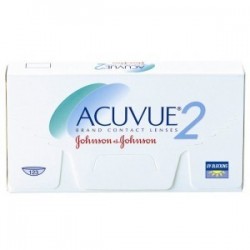
ACUVUE 2 contact lenses
Acuvue 2 contact lenses The Acuvue 2 is one of the best selling disposable contact lens in the market. It is a UV blocking ...
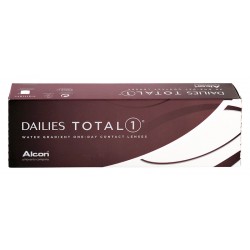
Dailies Total 1 (30)
Dailies Total 1 With all the innovations of today’s modern world, don’t settle for anything less. Why risk discomfort ...
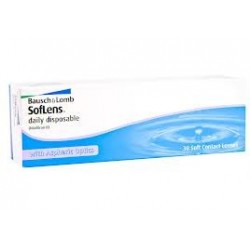
Soflens Daily Disposable Contact lenses (30)
The Softlens Daily Disposable Contact Lenses from Bausch & Lomb is disposable and designed for night time use. It delivers ...


